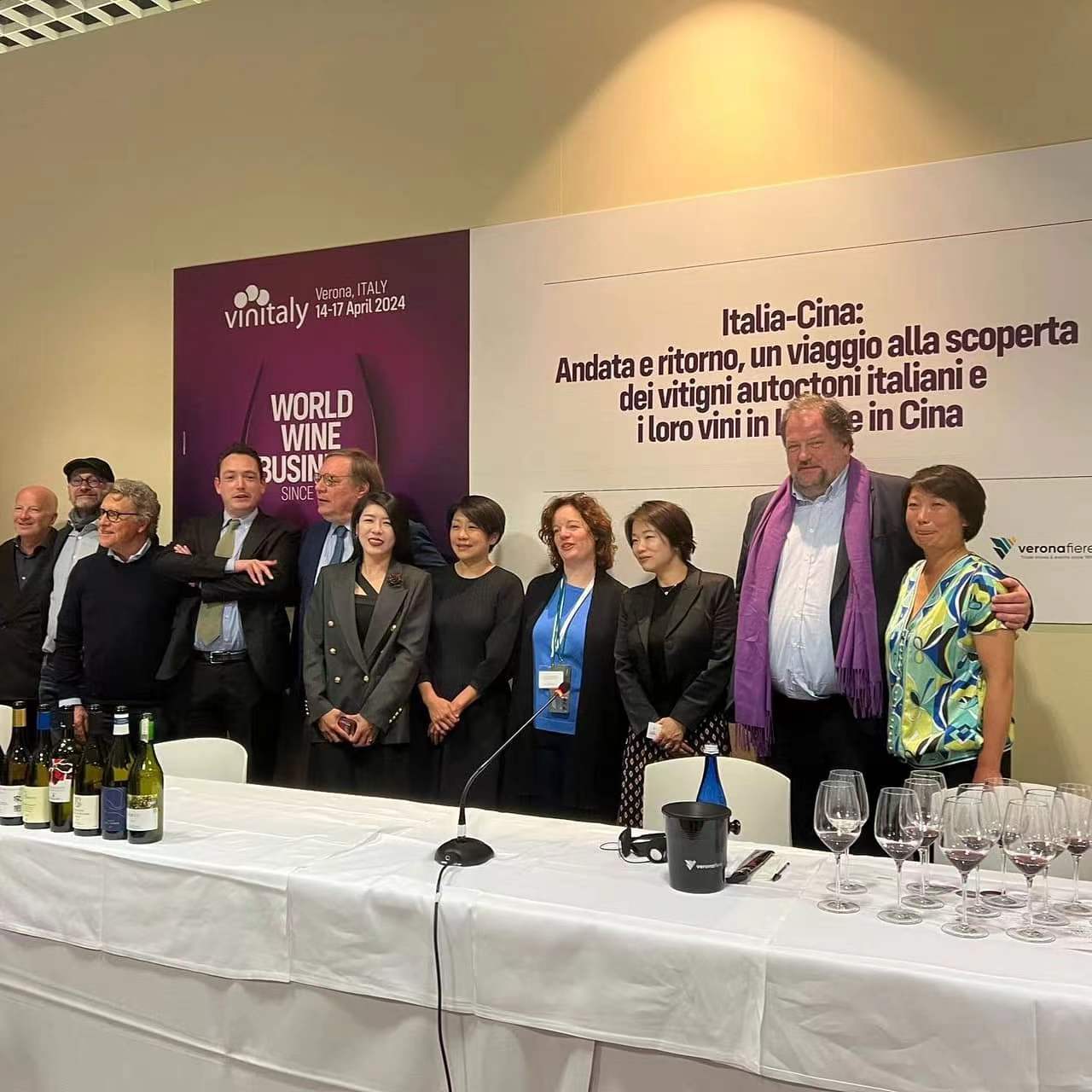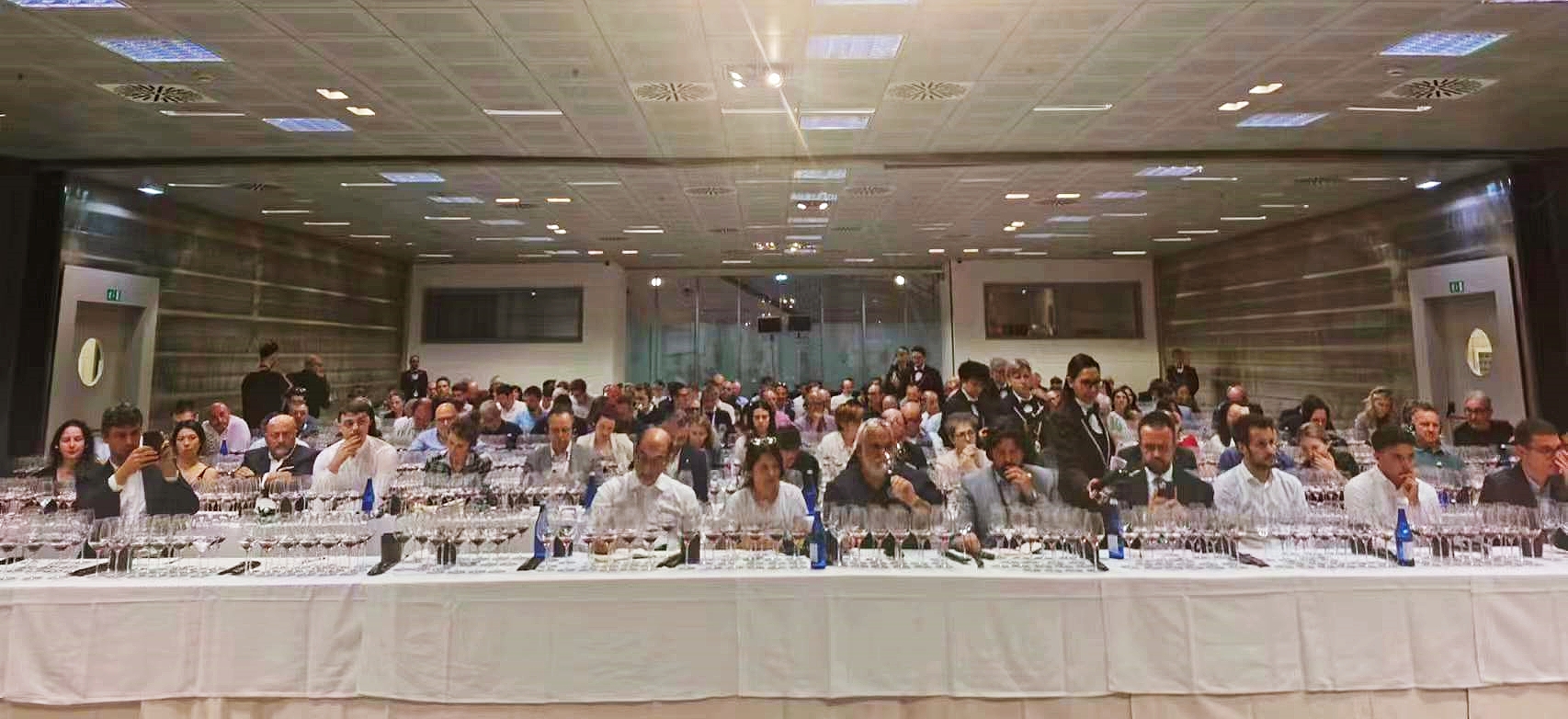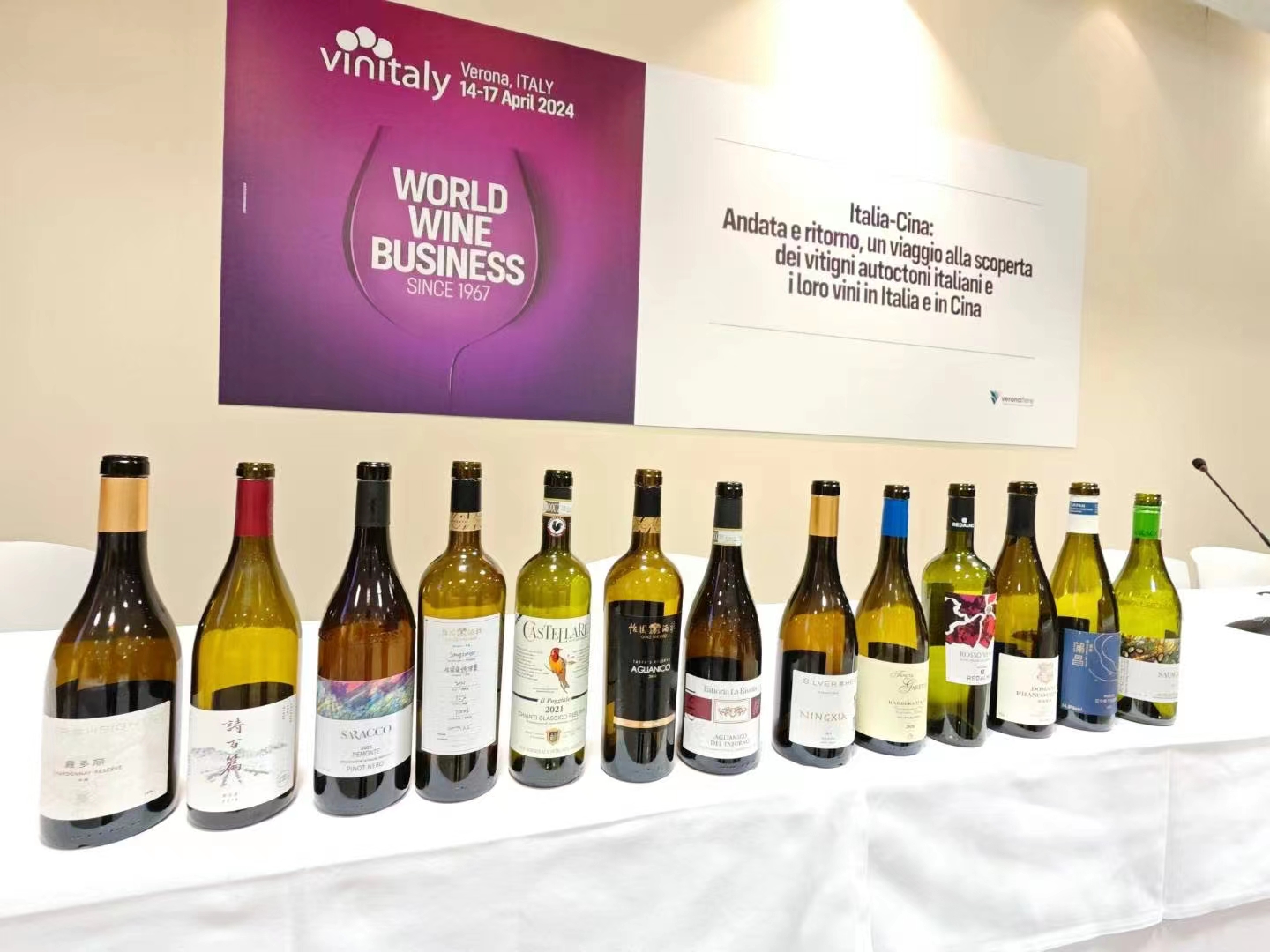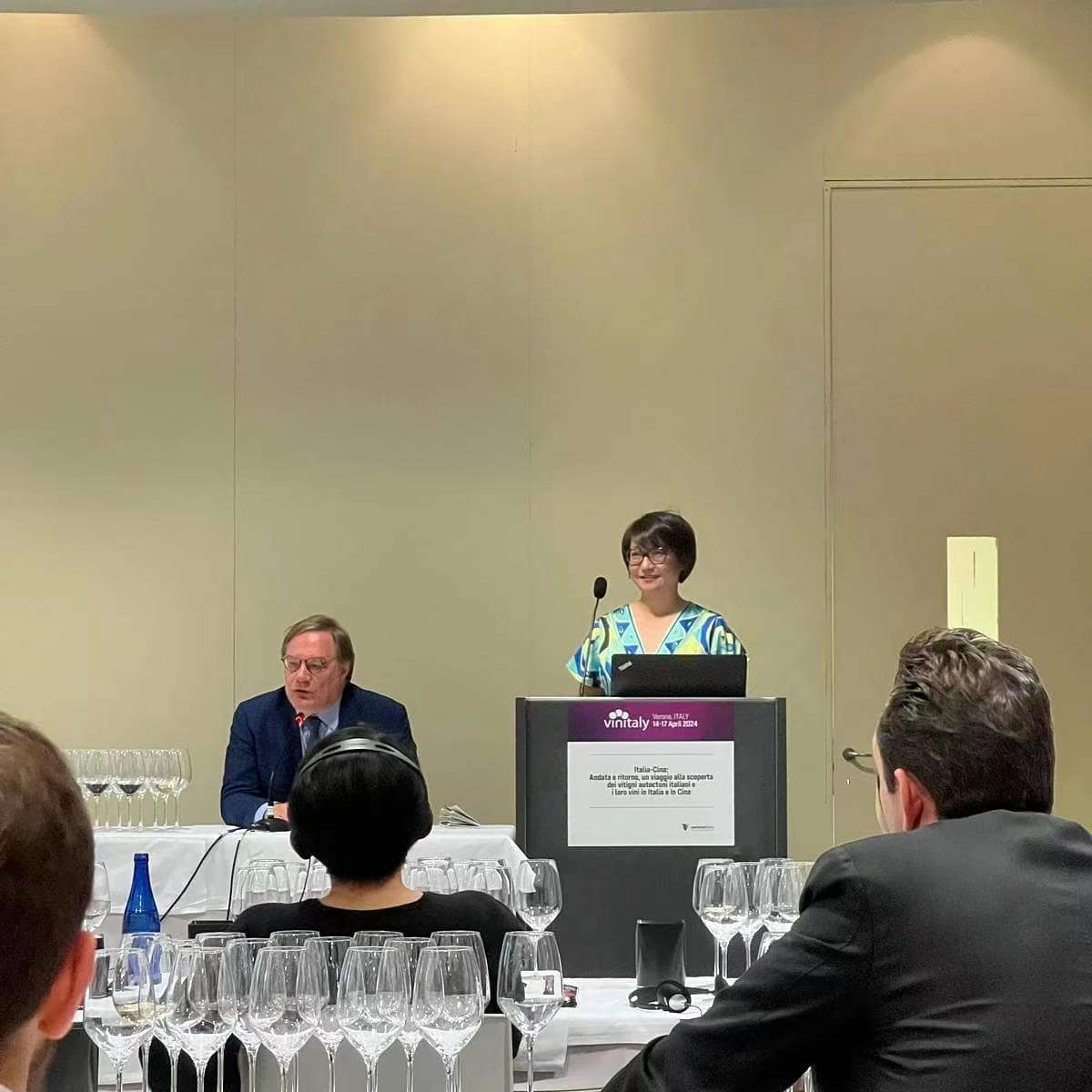Italy has been making wine for thousands of centuries.
China has also been making wine for thousands of centuries.
The main difference is that the wines of the first are famous and those of the second are not. But if you think about it for a second or two, you realize it was much the same with Bordeaux and California wines back in the 1960s and 1970s. Already then, California was making excellent Cabernet blends: but nobody thought much of them (or about them), because Bordeaux was all that mattered. It took a Judgement in Paris to change those perceptions in a jiffy. A few years later, it was Oregon’s turn to showcase that Pinot Noir wines from its own neck of the woods could also stand up to and be the equal of (when even better than) recognized Gallic masterpieces.
For a variety of reasons that would require a sociological, psychological and business analysis beyond the scope of the subject of this report, it takes time for people to become aware of what is going on outside of their immediate surroundings. Suffice it to say that after starting to work with Vinifera varieties on a commercial scale and in a modern manner at the end of the nineteenth century, China’s viticulture and winemaking have progressed to the point that the country has been making very good wines for the past fifteen years. Some are actually world-class wines, but wine lovers and wine professionals outside of China are not yet aware of this.

Differently from all other western wine writers who write about Chinese wines once in a while, I do so regularly. I have been visiting China since 2005, and have been tasting Chinese wines in large numbers every year since 2010. Furthermore, I have been living (very happily) in China since 2020, and have visited almost every Chinese wine production region at least twice since then (unfortunately, Covid happened and rather unpolitely got in the way of my winery travels). I am therefore very aware of the state of Chinese viticulture and winemaking today, its progress, and the level of its viticulture and winemaking.
China has been fermenting different foodstuffs since well before the common era (a secular reference term similar to AD, or Anno Domini). The first plants of Vitis vinifera grapes, the vine species used to make fine wine all over the world (for example, Pinot Noir, Nebbiolo and Riesling are all vinifera grapevines) were likely first grown in the imperial city of Xian from seeds brought to China in 128 bce (or before common era) by General Zhang Qian who was returning from Tashkent. [The General is still honored as the father of the Chinese wine industry by many Chinese wine professionals (there’s a statue of him standing at the Dynasty Winery in Tianjin).] Later, according to Nunez and Walker (1989), many new grape varieties also arrived into China through the Silk Road. To a smaller extent than in Europe, Catholic missionaries also played a role in spreading viticulture to pockets of China, as has been well-documented in the province of Yunnan, for example. In any case, Marco Polo described flourishing vineyards in the Xinjiang province already in the thirteenth century. Today, China boasts plantings of all of the world’s best-known international grapes, including Cabernet Franc, Cabernet Sauvignon, Pinot Noir, Chardonnay and others still; more interestingly, it also has small plantings of Italian native grapes and some of the wines I have tried so far made with these grapes have been surprisingly good. Not all of them: a Chinese Arneis wine I tasted recently was a complete joke, tasting totally aromatic, clearly made with a percentage of aromatic grapes (such as Muscats, Gewurztraminer or an aromatic Malvasia variety) undoubtedly to make it more interesting. Not that the wine was bad: not at all. However, such a wine is completely unrecognizable as being made with Arneis, and is therefore of little if any interest to anyone who wants to study and learn about the expression of Italian native grapes in Chinese habitats. Other wines made with Italian native grapes do showcase the Chinese expressions of wines made with the grapes indicated on the label (Aglianico, Barbera, Dolcetto, Sangiovese).
Things are much easier with the international grapes such as Cabernet Franc, Cabernet Sauvignon, Chardonnay, Marselan, Petit Manseng, Pinot Noir, Riesling and Syrah. Most of these are grapes have very dominant aroma and flavour profiles, and their basic character traits emerge no matter where you plant them. You can bend over backwards all you want in asserting and trying to get people to believe that the Chardonnay and Cabernet Sauvignon wines of California, Chile, Australia and South Africa are all very different, but the fact is such differences are at a minimum and which grapes were used to make such wines is immediately recognizable at first taste (and I mean immediately). In fact, that is precisely why those countries planted the better-known French grapes in the first place (and in so doing, turned them into “international” grapes: “international” in that these grapes that are now grown everywhere). After all, everybody wanted to make wines that would recall the famous wines of France, be easily recognizable, and consequently easier to sell. And that is precisely why such grapes as Cabernet Sauvignon and Chardonnay were first planted in China too (and the presence of the usual mix of French wine consultants certainly contributed to this state of affairs, given that they don’t usually recommend anybody planting say Torrontés, Furmint or Semidano). Admittedly, the French grapes are easier to work with and make wine from, as there is better knowledge of how and where to plant them and make wine from them (it’s one thing to make a Chardonnay wine, quite another one to make one from the likes of Pampanuto or Moscato di Scanzo, as the majority of people, wine professionals included, have absolutely no clue as to what they are and what to do with them). So it is that, when it comes to wines made with international grapes and in wanting to differentiate between the countries and specific habitats of origin, it becomes mostly a matter of nuance. For the most part, the real purpose that wines made with international grapes in countries with little winemaking history and pedigree really serve is just that they allow easy gauging of the quality level of those wines compared to the world’s benchmarks. Which even in the almost complete absence of any other redeeming value, is a perfectly acceptable role for such wines to have (and no, I don’t say or write that with my tongue in cheek).

The wines in this tasting report
All the wines in this report save one were tasted in Verona on April 17, 2024 at a masterclass I conducted for about 80 professionals from all over the world attending the Vinitaly fair. The wines of five Chinese wineries were tasted alongside those of five Italian wineries; a few wines made with international grapes were also thrown into the mix to provide a different context.
The owners/technical staff of the Chinese and Italian wineries selected by me to be part of this tasting were also present at the tasting (one Chinese winery owner was unable to attend at the last minute due to family issues). In alphabetical order, from China there were: Judy Chan (Grace Vineyard), Emma Gao (Silver Heights) and Clara Wang (Puchang) with a video presentation of Domaine Franco-Chinois and Canaan wineries as CEO Richard Li was not able to fly to Europe on this occasion; from Italy there were Paolo Cotroneo (Fattoria La Rivolta), Stefano Gagliardo (Gianni Gagliardo), Mattia Molinaro (Redalmo), and Paolo Saracco of the eponymous winery. Marco Milani, CEO of Silver Heights, and Loris Tartaglia, consultant winemaker of Puchang, were also on hand, each of whom discussed specific aspects that involve them at their wineries. Yumi Liu, Brand Manager and Educator at EMW Fine Wines (one of China’s major fine wine importer) was also on hand to address the crowd and provide a Chinese perspective on Italian wines and how they compared to the Chinese wines made more or less in the same manner with the same grapes. (The fact I specifically chose wines made in a similar manner is of course all-important, otherwise this tasting exercise would have been completely useless and a nonsensensical operation, not to mention a huge waste of everybody’s time.)

The only two wines included in this report that were not tasted in this masterclass were the Grace Vineyard 2020 Sangiovese Ningxia, a wine so remarkable I felt compelled to tell you about it anyways, and the always solid, dependable 2022 Colterenzio Chardonnay Altkirch Alto Adige wine that I chose as a measuring stick by which to gauge the excellent Silver Heights Chardonnay presented in the tasting.

Silver Heights 2021 Chardonnay Family Reserve Helan Mountain Ningxia 93
Bright pale golden-yellow. Banana, apple, butter, and orange oil on the nose, complemented by hints of flint and vanilla. Sweet, dense and powerful, with a creamy, suave texture while saturating the palate with flavours of orchard fruit, puff pastry and meringue on the long finish, which boasts persistent mineral, orchard fruit and terrific clarity and cut. At once, rich and yet light on its feet. Horizontal yet vertical, this is a knockout, and far superior to the majority of Italian Chardonnay wines: granted, Chardonnay is not a variety Italy excels at, with very few exceptions that are of any real interest but Chardonnay is a wine I know for a fact owner Emma Gao has worked at incessantly over the years (I’ve tried her wines from barrel for three years straight now) and she is improving on it in non-stop fashion. This 2021 is just plain outstanding. Well done. Drinking window: 2024-2028.
Colterenzio 2022 Chardonnay Altkirch Alto Adige 91
Straw-green colour. Aromas of guava, peach and banana are enlivened by a fresh lemony note. Then nicely suave and glyceral in the mouth, with flavours that echo the aromas. The aftertaste is nicely long and mellow, featuring a bright floral lift. Uncomplicated, easy-drinking, medium-bodied white Chardonnay wine from one of Alto Adige’s better cooperatives. Drinking window: 2024-2028.
Canaan 2018 Pinot Noir Mastery Hualai Hebei 90
Deep, bright red. Perfumed aromas of candied red cherry, blueberry, minerals, juniper and violet. Juicy, broad and sappy, with a solid core of red cherry fruit lifted by very good inner-mouth violet and dark berry nuances. Juicy, easygoing, nicely approachable Pinot Noir, with smooth tannins providing support on the medium-long finish. Not the most concentrated Pinot Noir wine you’ll ever drink but very well-balanced and uncomplicated. And given how difficult it is to make a Pinot Noir wine that actually tastes of Pinot Noir, this is an excellent effort by a relatively young Chinese winey. Well done. Drinking window: 2024-2027.
At Canaan, they have been conducting highly commendable field and cellar trials on many different types of Pinot Noir clones (113, 777, Wadenswill, others) and they are making better and better Pinot Noir wines. I have had the privilege of tasting through many of their clonal bottlings over the years and I can only say how impressive their achievements with this grape have been so far. This Pinot Noir wine, for example, is very food friendly and will find many fans.
Paolo Saracco 2021 Pinot Noir Piemonte 91+
Good full red-ruby. Subtly perfumed aromas of blackberry, blueberry, nutmeg, and cinnamon, complemented by herbs and earthtones. Nicely concentrated, compact and youthfully monolithic presently, but with lovely underlying Pinot Noir tang and mineral strokes. Taut, serious Pinot Noir with solid structure and firm, ripe tannins but also plenty of fruit lurking beneath the tannic cloak. From Paolo Saracco, the recognized master of Moscato d’Asti but also a gentleman very talented with other grape varieties (Saracco’s Riesling is also excellent), this Pinot Noir needs to spend time in a good cellar to blossom fully, but is really very promising. Drinking window: 2026-2032.
Grace Vineyards 2021 Sangiovese Ningxia 89
Good deep red-ruby; clearly, this is not the colour of a 100% Sangiovese wine. Big, broad aromas of ripe red cherry, coffee, cocoa, licorice and eucalyptus. Juicy and very fleshy but bright, with smoky nuances to its thick peppery flavours of dark plums and cherries with hints of tobacco, licorice, and dark chocolate. Boasts noteworthy density, finishing long and tactile with firm but ripe tannins. This is quite big and broad now and will only gain from a little more bottle age: it should also age well. It’s just a pity it doesn’t smell or taste much of Sangiovese; but it does taste of Merlot all-right. Drinking window: 2026-2030.
I think that the Sangiovese wine from Grace Vineyards, made with Ningxia graopes has real potential; talented, energetic owner Judy Chan is on to something here. She studies fully any new grapes she plants and vinifies them for at least three years before releasing a new wine that might feature them (provided she is happy with the result). This first Sangiovese wine from Grace has 20% Merlot added to it, as Chan and her technical staff felt the wine needed more “juice” to its mid-palate (at least, in this vintage). Their view is that this 80% Sangiovese and 20% Merlot wine is more balanced than it would have been had the Sangiovese been bottled on its own. I see their point, and to be clear, this 2021 is perfectly fine: the problem is that iot really doesn’t taste much of Sangiovese. Not having tasted what the 2021 Sangiovese wine was like all on its own (ie. before the merlot was added in), I can’t say how thin or not it was: if at Grace they felt the Merlot was needed, I’m sure that it was. But I do know that I actually liked the Grace Vineyard 2020 Sangiovese wine much more. Not because it was 100% Sangiovese (that’s not the point), but because it was a remarkably precise, perfumed, pretty example of Sangiovese wine like very few I have ever had with grapes grown from outside of Italy. It actually smelled and tasted of Sangiovese, and that’s a hard thing to get in wines made outside of a few specific areas of Italy (Chianti Rufina, Chianti Classico, Montalcino). At Grace Vineyard they managed to pull that off in 2020, and so I am hoping that, depending on the growing seasons of future vintages, they will be able to do so again.
Grace Vineyards 2020 Sangiovese Ningxia 93
Good pale bright red. Highly perfumed, nuanced and inviting aromas and flavours of redcurrant, sour red cherry, minerals and minty herbs, complicated by notes of orange peel and Longjin green tea. Juicy, vibrant and penetrating, but with harmonious acidity energizing the middle palate and nicely extending the very pure red berry and minty herbal flavours on the long, juicy, rising back end. This is an essence of Sangiovese: I did a real double take when I first tasted this, as it seems like it comes straight out of the upper reaches of the Chianti Rufina. A knockout Sangiovese wine like very few I have tasted made outside of Italy, this is just an amazing achievement. Rather dainty and light on its feet, it’s really all about perfume and grace (given it is a wine from Grace Vineyard, then allow me to add it’s a very apt wine for this winery) though clearly, all those weaned on fleshy behemoth Cab/Merlot wines won’t find much to like here. There’s no accounting for tastes, but frankly, if you want to drink Sangiovese, then this is what to look for. Drinking window: 2024-2030.
Castellare 2021 Chianti Classico Riserva Il Poggiale 91+
Bright saturated ruby to the rim. Deep aromas of dark fruits, licorice, underbrush, tobacco and smoky minerals. Rich, pliant and youthfully chewy, offering an intriguing mix of sweet dark berry, herbal and chocolate flavours in the mouth, with string musky herb and earthtones. Finishes lush and thick but not overripe, with broad, mouth-dusting tannins and outstanding length. Though you can drink this now, there’s no hurry as this will age effortlessly another ten years at least. And it will improve further, hence the ‘+’ sign on my score. Drinking window: 2026-2032.
Grace Vineyards 2019 Aglianico Tasya’s Reserve Shanxi 90
Full red-ruby. Musky aromas of dark red cherry, violet, roasted coffee and sassafrass, along with a meaty whiff of reduction. Wonderfully thick in the mouth yet fine-grained and plush, the perfectly integrated acidity lifts the rather mouth-filling, full-bodied almost chunky flavours of red fruit, oaky spices, camphor, licorice and black tea. Finishes with serious but sweet tannins that spread out to coat the palate on the long, youthfully big aftertaste. I’d give this big boy one to two years in a good cellar to mellow out fully, though you can certainly drink it now: just make sure you decant it an hour ahead, so as to let its reductive notes blow off. The winery only makes about 3000-5000 bottles/year depending on the vintage, but it’s very satisfied with the result. Aglianico poses little problems in the vineyard or the cellar, and it always seems to deliver, selling well. It’s the story of a successful Italian in China, you might say. Drinking window: 2026-2032.
First made in the 2012 vintage, this Aglianico bottling is in many ways a benchmark wine of sorts not just for the winery but for all of China. This is because it is the first successful, very good to excellent (depends on the vintage) wine made in the country from an Italian native grape and showcases just how far Chinese wines have come. Frankly speaking, to make an Aglianico wine this good outside of Italy is quite the feather in owner Judy Chan’s cap: very well done!
Fattoria La Rivolta 2022 Aglianico Taburno 91
Saturated medium ruby. Youthfully medicinal aromas of dark berries, bitter chocolate, licorice and menthol are lifted by lively violet notes. Very densely packed, with superripe flavours of raspberry, cassis and minerals, plus complicating tobacco nuances. Has enough harmonious acidity to taste not just ripe, fleshy and structured but also fresh. Closes long with substantial fine-grained tannins. A very good Taburno Aglianico but also an atypical one for Fattoria La Rivolta, as this wine is, in most vintages, usually more lifted and graceful than this rather humongous version. Still, those who like their reds big and bold will love this. Drinking window: 2025-2032.

Silver Heights 2023 Barbera Jiayuan Ningxia 93
Saturated bright ruby; actually, this is not as dark as when I tasted it out of barrel a few months ago. Piercing, pure nose of blackberry, violet and dark chocolate, with a whiff of minty herbs: very Barbera!. Deep, nicely concentrated, with the sweet blackberry and cassis fruit flavours nicely framed by smooth tannins and by harmonious lip-smacking acidity. The sweet black fruit flavors stain the palate and linger long on the aftertaste. This is an absolutely knockout Barbera, a wine grape that has adapted remarkably well, perhaps not so surprisingly, to Ningxia’s hot, dry climate (for sure, this is not the only outstanding Barbera wine I have tried from this Chinese province). Drinking window: 2024-2028.
Emma Gao, owner and winemaker of Silver Heights, is a remarkably talented winemaker who trained for many years at Château Calon-Ségur in Saint-Estèphe. A born tinkerer, she can’t help but make multiple different wines and versions thereof, but it is remarkable to me just how she nails the bullseye with everything new she tries. Examples of this are her outstanding, truly delicious PetNat called Bloom (that contains a small percentage of rice wine) and her lip-smackingly refreshing, very pure and precise (if not ultra-complex) apple cider. Barbera in China has an interesting story: it was planted in Ningxia, a extremely hot, almost desertic land, with the idea of using it as blending grape to add acidity. Fact is, at Silver Heights (and not just at Silver Heights) it turned out that Barbera was giving excellent wines all on its own, and so Gao, her CEO Marco Milani and the rest of her staff correctly decided to bottle it for the first time with this 2023 vintage. They couldn’t have made a better decision: the wine’s a winner.
Gianni Gagliardo / Tenuta Garetto 2020 Barbera d’Asti Superiore 93
Very pretty bright medium red colour; this is a rather bright red hue for a Barbera wine, wines that are usually much darker and purpley. High-pitched perfume of strawberry, raspberry, orange peel, licorice and violet: a very elegant and refined nose that has Nebbiolo-like echoes. Then juicy, vibrant, pure and concentrated, with spicy red fruit flavours nicely extended by ripe, harmonious acidity. Finishes with noteworthy precision and grip. I liked this! Drinking window: 2024-2029.
Redalmo 2023 (Marselan) Veneto Rosso 93
Deep vivid purple-ruby. Very perfumed aromas of violet, blueberries and minerals. Then fresh juicy and seamless, with lifted floral notes to the blue and black fruit flavours that linger impressively on the very pure, minerlly finish. This is a real knockout. Redalmo’s version of Marselan wine, a real rarity in Italy as few people are growing this grape in the country, is vinified and matured in stainless steel only, a treatment option that allows the perfumed violet and crunchy red and blue fruit aromas and flavours to shine brightly from start to finish (of the bottle). Lowish in alcohol octanes but high on flavour and balance, this is an absolute jewel of a red wine and one of the best “new” wines (and vintages) I have had in the last decade or so. Drinking window: 2024-2030.
Marselan is a crossing of Cabernet Sauvignon and Grenache developed by Paul Truel in 1961 in France; it was intended to be an ideal wine grape for areas with hot climates but its small berries turned off farmers faster than you could blink. And so the grape fell by the wayside. But now this beauty from Veneto’s little but high-quality Redalmo winery joins the fray (only a couple of other wineries are making a Marselan wine in Italy, but to the best of my knowledge only one other is a monovariety bottling, and it’s oaked). That’s how good it is.
Domaine Franco-Chinois 2014 Marselan Reserve Hualai Hebei 92
Bright deep ruby-red. Herbs, milk chocolate and licorice complicate cassis, tobacco and leafy herbs on the deep, enticing nose. At once creamy-dense and light on its feet, with a light touch and excellent lift to the blackcurrant, plum and leafy tobacco flavours. Closes long with very smooth tannins and ripe acidity that leaves a long, brisk, pleasant aftertaste. Ready to drink now, I wouldn’t hold on to this red much longer; will be perfect with grilled meats and stews. Drinking window: 2024-2028.
Puchang Vineyard 2021 Muscat Dry Turpan Valley Xinjiang 93
Good medium yellow-green. Boasts lovely aromatic and super-strong floral tang to the intense, concentrated aromas of guava, yellow melon, candied apricot, honey, ginseng, ginger, white and yellow flowers, and medicinal herbs. Fat, lush and dense, but blessed by high, harmonious acidity that really provides the super-intense flavours of crystallized orange peel, honey and spices with utmost clarity and cut. Like many other Muscat wines, this really does taste of crushed grapes. The impression of brisk acidity here gives this a beautiful light on its feet texture and the impeccable sugar/acid balance invites you to take another swallow as soon as you’ve finished the previous one. This is one of the best vintages of dry Muscat that Puchang has ever made, as it’s more refined in its penetrating florality than in some past vintages was almost too much of a good thing. Wonderful stuff. Made with 100% Rodinxiang, a Muscat hybrid typical of China that gives a Muscat wine unlike any other in the world. Drinking window: 2024-2027.
Paolo Saracco 2023 Moscato d’Asti 95
Pale straw-green. Very intense and yet refined nose hints of orange flower, white peach, vanilla, grapefruit, ginger and sweet spices. Dense and deep, with an almost oily richness, this boasts an enticing deep sweetness currently masking the wine’s inherent complexity. Closes long and creamy with explosive floral and fruity power. This is at once a marvel of lightness of being and of mindboggling viscosity, a combination that is rare to find in most wines, never mind Moscato d’Asti. Moscato d’Asti just doesn’t get any purer, more concentrated, more complex, and deeper: this 2023 Moscato d’Asti from Saracco (a better wine than the 2022, which suffered from the overly hot year), is the Champions League of white Muscat wines, with almost everyone else playing in thee UEFA Europa cup instead. I had scored a previous bottle 94, but I think I was too stingy, so I am upping it further. No worries, you can thank me later. Drinking window: 2024-2032.

 中文
中文



